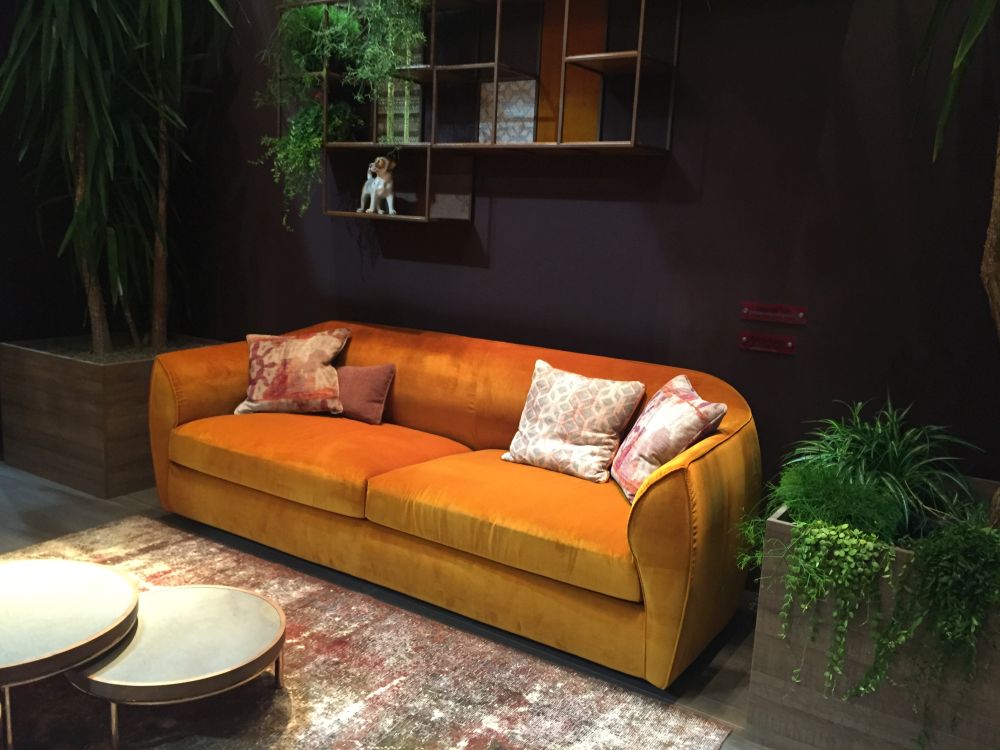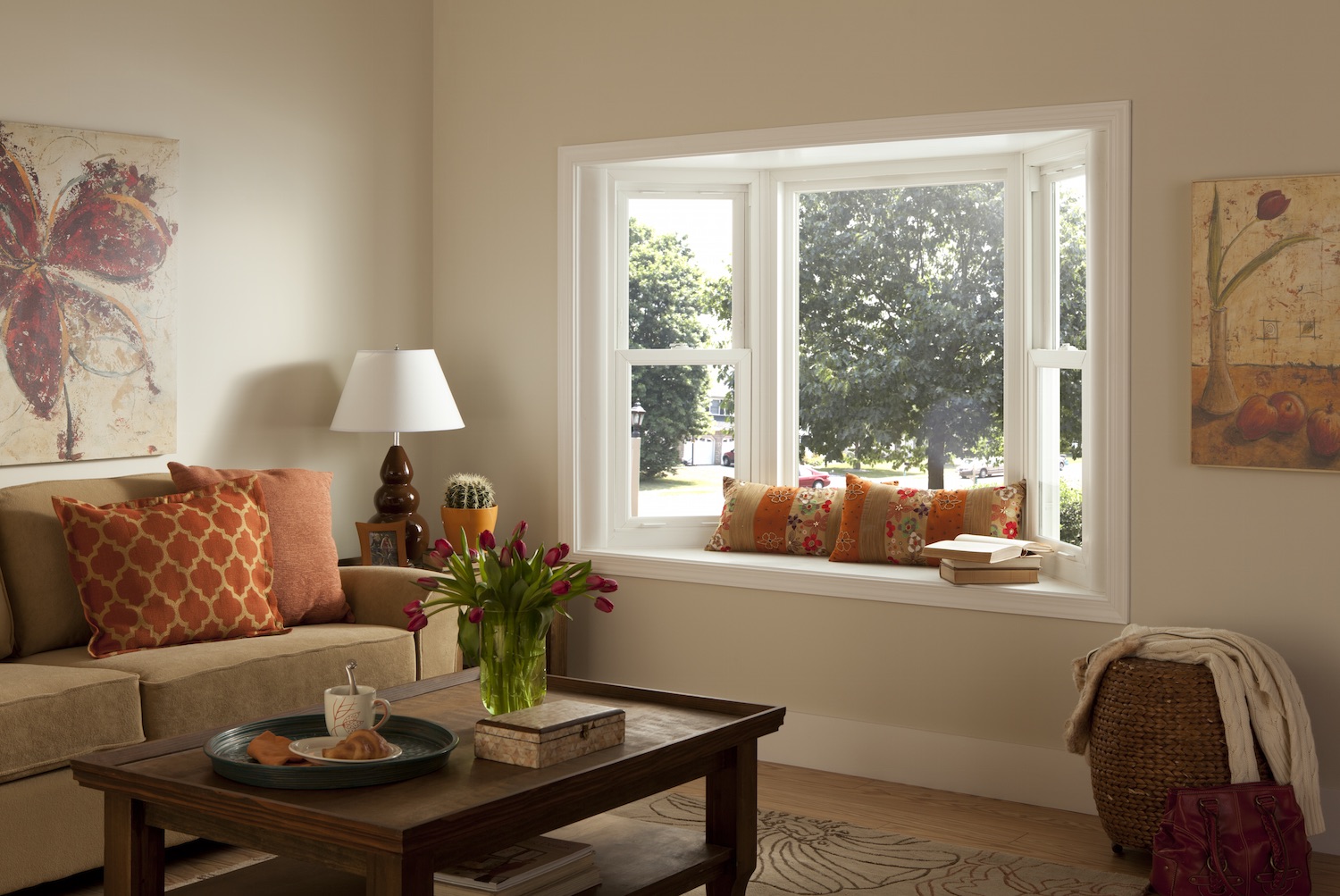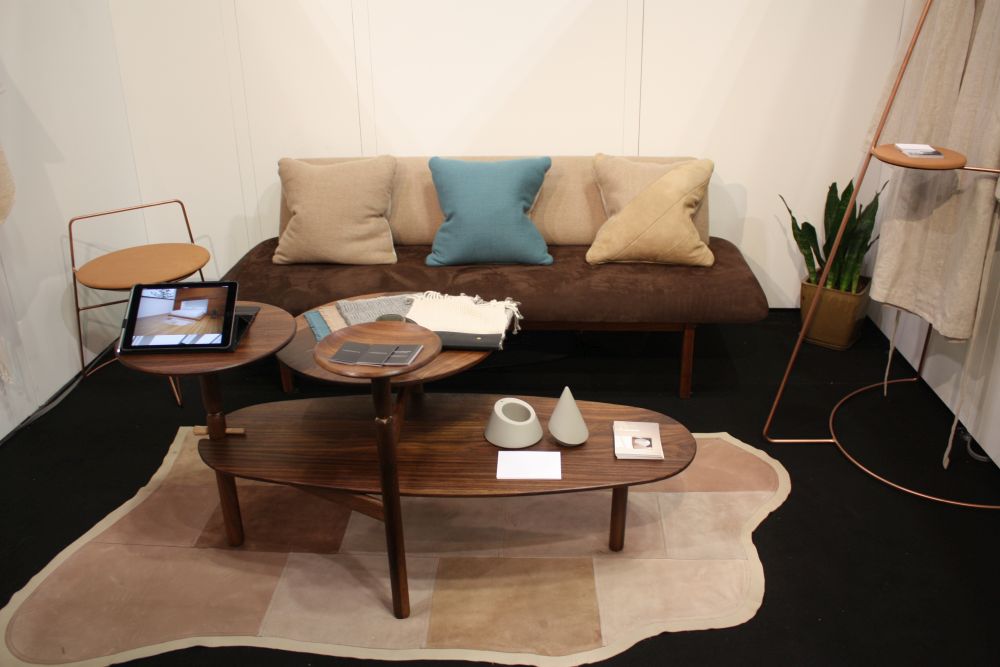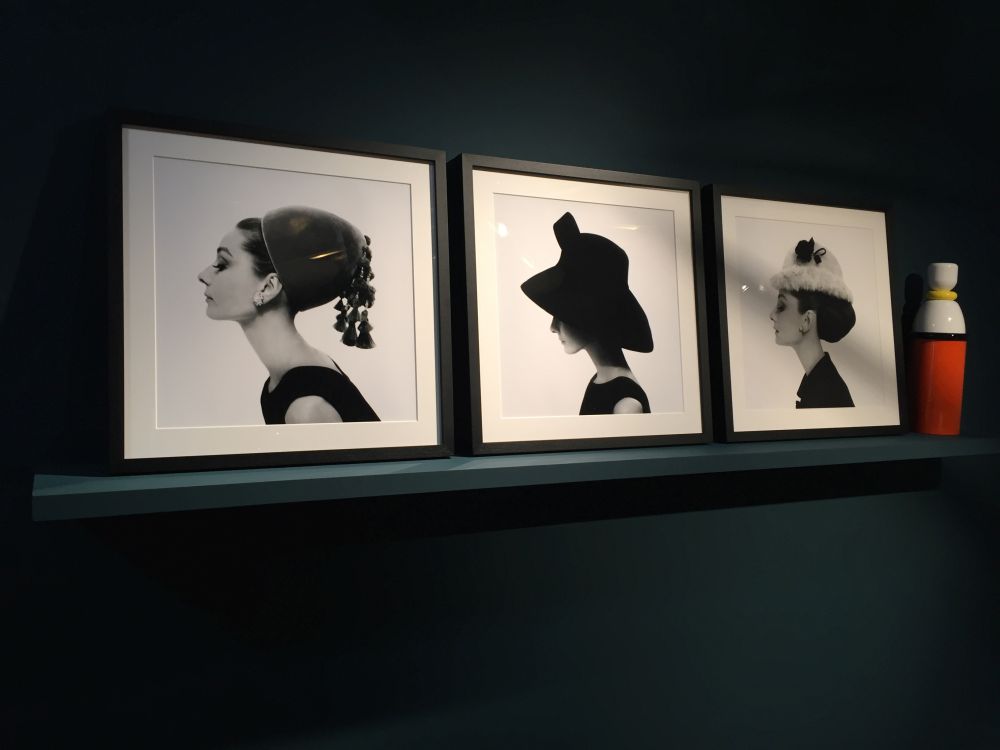The living room is an important space in any home, whether it’s a loft, a studio apartment, a duplex, a single-family home, or a mansion. The reason the living room is so important is because it’s the primary social space in the home, whether among the residents themselves or invited guests as well. Using feng shui in the living room becomes a higher priority when the room’s importance is recognized, and when one remembers that feng shui can transform the flow of qi (energy) from chaotic and fast or stagnant and stale to a steady, calm flow that is both rejuvenating and refreshing. In this article, we’ll discuss how to feng shui your living room with regard to location, layout, furniture, and overall vibe.
How to Apply Feng Shui to Your Living Room To Transform the Energy in Your Home
FENG SHUI LIVING ROOM: LOCATION IN THE HOUSE
The location of the living room within the home itself plays a key role in the level of comfort and positive flow of qi.
Two Exterior Walls – A feng shui living room will be located in a room that has at least two exterior walls. This ideal living room location is close enough to the outdoors that fresh, positive energy can enter and flow freely, without becoming stagnant or stale. Ultimately, this location for the living room will activate feng shui elements in the living room to help create a healthful, restorative social space.
The Ceiling – While we don’t always have full control over our living room’s ceiling, there are certain considerations worth learning about in feng shui. A low ceiling is best avoided in feng shui, as it gives a compressed and negative energy to the room. It also makes a room more difficult to gather in, as you’ll feel cramped when you add extra guests into the space. Of course, there are various tactics and colors you can use on your walls to create the illusion of a higher ceiling. Also, if possible, avoid a slanted ceiling in your living room, which can also compress your space.
Avoid the Living Room in the Center of the House – A feng shui living room will not be located in the center of the house. Along with the feng shui guidelines for two exterior walls in the living room, this rule is to maintain an optimal, healthy flow of qi. If the living room is housed in the depth of the house, energy can’t easily reach it; the flow stalls and eventually stops because it has to pass through too many other rooms before reaching the living room.
Well Lit & Ventilated – The feng shui living room, due to its connection with external walls, will be naturally well-lit. In fact, the space will ideally receive plenty of sunlight. In addition to the natural light through windows on exterior walls, a feng shui living room will be well ventilated because of the windows’ capacity to open and keep fresh air flowing. This freshness is a key component of feng shui – vitality and health.
One of the easiest ways to clear the air in your home is to simply open the windows. However, in feng shui, it’s always recommended to open them for nine minutes, as nine is a number of good fortune in feng shui. Airing out your home regularly will remove negative and old energy and allow new and positive energy to enter your home. You’ll also want to keep your windows clean at all times with a glass cleaner or vinegar mix.
No Direct Facing Doors – In the feng shui living room, doors will not directly face or open up into other doors. This creates a tunnel effect for all energy, and the rest of the space will fail to benefit from any flowing qi or restful energy.
Modest Doors & Windows – The feng shui living room will have exterior walls (and hopefully windows) and a door or two, but it should be noted that the ideal location for the living room avoids too many windows and more than two doors. This is because having too many doors and windows into/out of the living room creates somewhat of a chaotic qi current that is unsettling and even damaging to those in the living room.
FENG SHUI LIVING ROOM: LAYOUT
Once you’ve determined the best location for your feng shui living room, the next step is determining its optimum layout.
Sufficient Accommodation – While there are often few adjustments you can make to the actual size of your living room, it should never be too small to comfortably accommodate the entire family. Preferably, the feng shui living room will hold additional guests with ease and grace, also. When a living room is on the larger side, positive qi energy can enter and move in and around the room for a whole-room restorative experience.
Roomy & Comfortable – The feng shui living room, no matter what its actual physical size, feels roomy and comfortable. This has less to do with the living room’s footprint and everything to do with the layout of the furnishings within the space.
Maintain Pathways – In a feng shui living room, natural and architectural pathways will be maintained by optimum furniture placement. Obviously, a chair that sticks out into an inherent walkway through the living room will become a safety hazard. More than that, though, that same chair’s blockage stunts and thwarts the attempts of energy to flow freely and positively throughout the living room.
Strategic Fireplace – To the extent possible, install your living room fireplace strategically. A northeast fireplace aids in calm and collected thinking, as well as fortunate education. A south and southwest fireplace enhances romance and love. In fact, the whole south side of your living room will benefit from your use of red, pink, orange, and green hues, according to the feng shui Bagua.
The Bagua energy map features nine areas, which will correspond with various areas of your home. You can use the qualities from this map to enhance your living room’s feng shui, which can easily be achieved by adding the color to that part of your room. If your living room is in two areas, you can use two different colors within your space.
Reflect the Landscape – For the feng shui living room that benefits from a beautiful landscape view, format the furniture in such a way that the view can be appreciated from all parts of the living room. Consider hanging a mirror so that it reflects the landscape for those who, seated, may not be able to appreciate the view in person. A natural view is a sure way to enhance the positive energy of a space.
Television Placed Strategically – If you are following the feng shui Bagua, or energy map of your home and space, a TV that is positioned in the north (career) side of the living room is auspicious; this layout is said to attract good luck in one’s career. A TV positioned in the south (fame and recognition) part of the living room enhances the opportunity for fame and respect. Basically, because of the active (yang) energy of televisions, they will activate the area of the living room they’re placed in.
FENG SHUI LIVING ROOM: FURNITURE
With your layout ideas in mind, it’s now time to determine exactly what furniture will bring out the best living room feng shui.
Rounded Pieces – In feng shui, corners and hard angles are a significant deterrent to the restfulness of a space. The angles create what are called “poison arrows,” which point negative energy directly at a single point. To avoid this in the feng shui living room, consider incorporating furniture with rounded edges. Try to avoid corners where possible.
Living Room Sofa – The feng shui living room’s sofa is discussed in detail in this article on how to feng shui your sofa. Ideally, the sofa should be positioned against a solid wall to lend stability and security to whoever sits on it. It should also be comfortable.
Loveseat & Single Chair – Along with the primary living room sofa, if your living room is large enough, feng shui recommends adding a loveseat and at least one single chair. These pieces of furniture provide plenty of options for any number of various seating needs – seating for one, two, three, four, five, etc. What’s more, the sofa, loveseat, and chair combination gracefully allows for a coffee table in the feng shui living room.
Your living room is a social space, and so there should always be a seat for each member of your family or household. You should all feel like you are welcome in this space together, and this will also make it easier for entertaining guests in the future. As a social space, you want every seat to be facing each other, so no one has their back to someone else who is speaking. Also, try to avoid anyone’s seat being placed with its back to the door in the room.
Square Coffee Table – While rounded edges are often preferred in a feng shui space (even in the living room), the coffee table might be one exception where square or rectangular is more auspicious. This probably has more to do with the function of the coffee table – providing various people sitting in various seats a place to put objects – than anything else, really. To provide comfort and hospitality in the feng shui living room, a coffee table is vital.
Your coffee table will be the focal point of your living room, just as your living room is the center of your home. It’s ideal for socializing with friends and family but should always be made out of metal or wood where possible. Keep your coffee table uncluttered so that it doesn’t add any hectic or negative energy to your home. Of course, while you have friends and family around, you can have drinks and snacks on the table. Once they leave, clear the coffee table straight away to keep the good energy in your home.
Positive Qi-Activating Lighting – Lighting in the feng shui living room is an important factor. Along with natural light (which your living room should have, with its two exterior walls), other lighting options will help to complete the desired function and ambiance. Table lamps and wall sconces provide upward-flowing light. Overhead lighting provides functional task lighting options.
FENG SHUI LIVING ROOM: OVERALL VIBE
Feng shui is more than just a series of rules to follow; it’s mostly about the spatial arrangement to enhance the overall look and feel of the space. It’s the overall vibe, really, that makes great feng shui.
No Clutter – In a feng shui living room (and, frankly, any space trying to incorporate the restful, comfortable, and safe ambiance of a feng shui space), clutter will be avoided at all costs. Messiness, clutter, and other untidy distractions serve to thwart the flow of qi as well as bring about a sense of discomfort.
While clearing your space of physical clutter, you also want to clear the space of negative energy. Many people like to clear their space with techniques such as diffusing essential oils, smudging, or ringing bells. A small diffuser can easily be added to any living space to allow for regular space clearing and more positive energy.
Use hard-working, double-duty furniture pieces to help contain the clutter…as well as a good old-fashioned “pick up after yourself” mentality.
Positive Artwork – A feng shui living room incorporates artwork, photos, or other images that are pleasant and positive. Smiling faces, pretty parts of nature, and other optimistic pieces are preferred over pieces (however remarkable they might be, artistically) depicting sadness, crime, struggle, or storm.
Strategic Artwork – In those instances where your artwork depicts a beautiful body of water or a sailing vessel, be sure that the overall vibe is calming and that the movement of the artwork is toward the room. The same holds true for art with human and animal stances or movement. You don’t want your energy to be leaving the room through your art.
When it comes to art, you can add the five elements into your room easily through various paintings. For example, a red image adds the element of fire, or waves add water. In feng shui, it’s recommended to avoid artwork that has an emotional history or negative feelings associated with it. If you received a piece of artwork from someone you are no longer in contact with, it’s best to remove it from your house to remove negative energy. In your living room, ensure your artwork is placed at a good height for the size of your room and its layout. Don’t hang anything too low, or this reduces the energy in the room and can ultimately lead to depression.
Reflect the Positive – If you choose to incorporate a mirror into your feng shui living room, there are a couple of guidelines to follow. First, the mirror should avoid reflecting anything negative (e.g., clutter, grime, etc.), because that negativity will flow into your home. Second, the mirror should avoid reflecting anyone directly as they stand at a living room door.
Cover TV – Mirrors are a tricky business in feng shui. In some instances, they are recommended to reflect vibrant, invigorating energy; in other cases, they enhance negative, discomforting qi. The television is one place that should serve as a TV, and not a mirror. So, in the feng shui living room that houses a TV, it should be covered when not in use so as to avoid its mirror-like reflective properties.
Your TV should be placed on the north or south side of the room. You’ll want to ensure your TV area doesn’t become cluttered with controllers or consoles and that they are all hidden when not in use. If you can have a living room without a TV, that would be great, but of course, that’s not very likely in most homes in this modern-day and age.
Aquarium in the Living Room – If you have a place for it in the north side of your living room, an aquarium is a solid choice for the feng shui living room’s enhancement. (It’s said to facilitate wealth and opportunity; the southeast part of the living room is also good for aquariums, too, attracting good luck.) For the feng shui living room aquarium, a square or rectangular shape is best, with round being the second choice.
Candles in the South – Candles work well in most feng shui living rooms, balanced with other elements of course. It is recommended that this type of décor is mostly located in the south part of the living room, which is not surprising since a feng shui living room’s fireplace is in the south as well. (Candles on the mantel for the double-win.)
If you aren’t familiar with the five elements of feng shui, they are earth, metal, water, wood, and fire. They work together to offer good health and wellbeing to our homes, and you should strive to include something representing each element in your home. The five elements don’t need to be taken too literally, and instead, you can add shapes or colors to represent these elements. For example, fire is represented by red or triangular-shaped items. On the other hand, water can be added in the way of blue colors and curvy furniture or decorations.
Wood Pieces – Feng shui living rooms tend to have a variety of wood items, from large furniture pieces to small décor details. Small and mid-sized wood pieces, such as photo frames and bookshelves, work well in the east and southeast parts of the living room. Wood furnishings tend to do well in the south as well.
On top of wooden pieces, try to add green plants into your living room. This is an inexpensive and quick way to add feng shui into your space. Of course, you will want to ensure you don’t neglect to look after your new plants, as dead plants will cultivate bad energy in your room. The health of your home’s plants indicates the luck within your household, so ensure they aren’t dying off and reducing your good luck.
Consider adding one larger plant in your living room or a collection of smaller plants to offer the same benefits. A large potted plant is perfect for the living room and can attract wealth to your home. Try to find a plant with large and round leaves, as pointy leaves are not recommended in feng shui. Plants also add a wide variety of additional benefits to your home in addition to the feng shui elements discussed here.
Metal Décor – Metal objects in the feng shui living room often include things like metal bowls, trays, candlesticks, and photo frames. These are particularly beneficial when placed in the west and northwest areas of your living room. In fact, if you’re looking for a place to incorporate a family photo into your living room, consider framing it in a metal frame and hanging it on your living room’s west wall for good luck.
Hanging Crystals – Sometimes, even in a feng shui living room, poison arrows brought about by right-angled pieces or wall corners simply can’t be avoided. One technique for alleviating the harsh negative ray is to hang a multi-faceted crystal from the ceiling, which reflects and refracts the negative qi and helps to dissipate its potency.
Keep it Personal – Remember that feng shui isn’t simply about Chinese furniture and décor. Rather, it is a feeling in a space. True feng shui is about form and placement, not specific symbols and statues placed in the four corners of your room. Be sure to reflect your personal style and preferences.

Feng Shui Living Room Colors – The Bagua map can give you a good indication of color in your living room, as well as incorporating the five elements of feng shui. Color works to enhance your life, and by choosing certain colors, you can try to cultivate a specific type of energy. For example, purple may encourage wealth and prosperity, whereas red is connected with the crown chakra and represents royalty or abundance. You don’t have to go ahead and paint your whole room in a color you are looking to add, but you can instead add furniture, accessories, or artwork to your room for a splash of color. In feng shui, we always encourage you to listen to your intuition and go for what feels right in your home. Don’t feel like you must add a color into your living room if it doesn’t feel right for your space.
After the bedroom, the living room is the space that we spend the most time in. Regardless of the size of your home or apartment, the living room acts as a social space, and you’ll usually sit here to entertain guests. The importance of this space means you should take the time to ensure you create a good flow of energy to avoid feelings of chaos. By following the tips listed above in regards to layout, location, and furniture, you can feng shui your living room without too much effort to create a space you enjoy spending time in.
The post Feng Shui Your Living Room: Location, Layout, Furniture, and Overall Vibe appeared first on Home Decorating Trends - Homedit.


































0 Commentaires